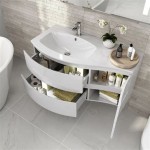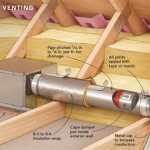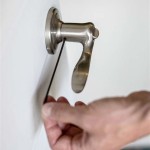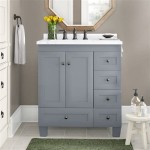How To Fix a Dripping American Standard Bathroom Faucet
A dripping faucet, particularly in a bathroom, is more than a mere annoyance. It represents a constant waste of water, potentially leading to increased water bills and, over time, can contribute to the deterioration of the fixture itself and the surrounding countertop. An American Standard bathroom faucet, while generally reliable, is not immune to the occasional drip. Understanding the common causes of these drips and knowing how to address them is a valuable skill for any homeowner. This article will provide a comprehensive guide to diagnosing and fixing a dripping American Standard bathroom faucet.
Before commencing any repairs, it is imperative to gather the necessary tools and materials. This proactive step will streamline the repair process and minimize the likelihood of encountering unforeseen delays. Essential tools typically include: a set of screwdrivers (both flathead and Phillips head), an adjustable wrench, a basin wrench (especially useful for accessing shut-off valves under the sink), a set of Allen wrenches (also known as hex keys), a pair of pliers (preferably slip-joint pliers), penetrating oil (such as WD-40), a utility knife, and a small container to hold small parts. Materials will vary depending on the identified cause of the leak but generally include replacement O-rings, washers, cartridges, and potentially a new faucet valve.
Safety is paramount when undertaking any plumbing repair. The first and most crucial step is to shut off the water supply to the faucet. Typically, there are shut-off valves located under the sink, one for hot water and one for cold water. Turn these valves clockwise until they are completely closed. Once the water supply is shut off, turn on the faucet to relieve any remaining pressure in the lines. It is advisable to place a towel or bucket under the faucet to catch any residual water. If shut-off valves are not readily accessible or are malfunctioning, it may be necessary to shut off the main water supply to the house. This will require locating the main shut-off valve, typically found near the water meter or where the water line enters the building. After shutting off the main supply, drain the pipes by opening the lowest faucet in the house.
Identifying The Source of the Leak
Pinpointing the exact location of the drip is a critical first step in determining the necessary repair. American Standard bathroom faucets come in various styles, including compression faucets, cartridge faucets, ball faucets, and ceramic disc faucets. Each type has its own unique design and potential failure points. The location of the drip often provides clues about which component is failing.
A drip emanating from the spout of the faucet typically indicates a problem with the valve seat, O-rings, or cartridges inside the faucet body. If the drip is coming from around the base of the faucet, where it meets the sink, the likely culprit is a worn-out O-ring or seal. A leak originating from the handles often suggests that the stem O-rings or cartridges within the handles are damaged or deteriorated. Carefully observing where the water is escaping from the faucet will guide the troubleshooting process.
Once the location is identified, a process of elimination should be undertaken to identify the specific part that needs replacement. For example, with a two-handle faucet, observe if the drip continues when only one handle is turned off. This can help isolate the issue to one side of the faucet. Similarly, slightly wiggling the handles can sometimes temporarily stop the drip, suggesting worn stem O-rings.
Repairing a Compression Faucet Leak
Compression faucets are the most traditional type of faucet and are characterized by separate hot and cold water handles. They operate by compressing a rubber washer against a valve seat to stop the flow of water. A common cause of drips in compression faucets is a worn or deteriorated washer. Over time, the washer can become brittle, cracked, or misshapen, preventing it from creating a tight seal against the valve seat.
To repair a compression faucet, begin by removing the decorative handle cap, usually located on the top of the handle. Use a small flathead screwdriver to gently pry the cap off. Underneath the cap, there will typically be a screw that secures the handle to the faucet stem. Remove this screw and carefully pull the handle off the stem. Next, use an adjustable wrench to loosen and remove the packing nut, which is located around the stem. Once the packing nut is removed, you should be able to pull the stem assembly out of the faucet body.
At the base of the stem assembly, you will find the rubber washer. Inspect the washer for any signs of wear, damage, or deterioration. Even if the washer appears to be in relatively good condition, it is generally advisable to replace it. Remove the old washer and install a new one of the same size and type. Ensure the new washer is securely attached to the stem. In some cases, the valve seat itself may be damaged or corroded. Inspect the valve seat for any irregularities. If necessary, a valve seat dressing tool can be used to smooth out minor imperfections. For more severe damage, the valve seat may need to be replaced. Apply a small amount of plumber's grease to the threads of the stem assembly and the packing nut before reassembling the faucet. This will help to ensure a smooth operation and prevent future leaks.
Repairing a Cartridge Faucet Leak
Cartridge faucets are known for their ease of use and relatively simple repair process. They typically feature a single handle that controls both the temperature and the flow of water. A leaking cartridge faucet often indicates a problem with the cartridge itself. Over time, the internal seals within the cartridge can wear out, allowing water to bypass the valve and cause a drip.
To repair a cartridge faucet, start by turning off the water supply. Remove the handle, which is often secured by a set screw located on the side or back of the handle. Use an Allen wrench to loosen the set screw and pull the handle off the faucet body. Once the handle is removed, you will typically find a retaining clip or nut that holds the cartridge in place. Remove the retaining clip or nut to release the cartridge. Use pliers to gently pull the cartridge straight out of the faucet body. It may be necessary to wiggle the cartridge slightly to loosen it.
Examine the cartridge for any signs of damage or wear. Look for cracks, breaks, or deteriorated rubber seals. It is generally recommended to replace the entire cartridge rather than attempting to repair individual components. Take the old cartridge to a hardware store to ensure you purchase a compatible replacement. Before installing the new cartridge, clean the inside of the faucet body to remove any debris or mineral deposits. Apply a small amount of plumber's grease to the O-rings on the new cartridge. Align the cartridge properly and gently push it into the faucet body until it is fully seated. Reinstall the retaining clip or nut to secure the cartridge in place. Replace the handle and tighten the set screw. Turn the water supply back on and test the faucet for leaks.
Sometimes, mineral buildup can contribute to cartridge faucet leaks. If the cartridge seems to be in good condition, consider soaking it in a de-scaling solution like vinegar to remove calcium or lime deposits. Rinse the cartridge thoroughly before re-installing.
Addressing Leaks at the Faucet Base
Leaks originating from the base of the faucet, where it meets the sink, often stem from deteriorated O-rings or seals. These components are designed to create a watertight barrier between the faucet body and the sink surface. Over time, they can become brittle, cracked, or compressed, allowing water to seep through.
To address this type of leak, it is typically necessary to remove the entire faucet from the sink. Begin by shutting off the water supply. Disconnect the water supply lines from the faucet tailpieces using a basin wrench or adjustable wrench. Be prepared for some residual water to drain from the lines. Next, loosen the mounting nuts or screws that secure the faucet to the sink. These are usually located underneath the sink and can be difficult to access. A basin wrench is particularly useful for this task.
Once the mounting hardware is removed, carefully lift the faucet off the sink. Inspect the O-rings and seals located at the base of the faucet. Replace any that show signs of wear or damage. Clean the underside of the faucet base and the sink surface to remove any debris or mineral deposits. Before reinstalling the faucet, apply a bead of plumber's putty or silicone caulk around the base of the faucet. This will create a new watertight seal. Position the faucet on the sink and tighten the mounting hardware securely. Reconnect the water supply lines and turn the water supply back on. Check for leaks around the base of the faucet and the water supply connections.
In some instances, the sink itself may have imperfections that contribute to leaks. Inspect the sink surface around the faucet mounting holes for any cracks or chips. If necessary, apply a small amount of epoxy or sealant to these areas to create a smooth, even surface.

How To Fix A Dripping American Standard Bathroom Faucet

How To Repair Dripping American Standard Bathroom Faucet Handle Part 1

How To Replace A Leaking Bathroom Faucet Cartridge

How To Repair Dripping American Standard Faucet In Bathroom Part 2

How To Fix A Dripping American Standard Bathroom Faucet

How To Fix A Dripping American Standard Bathroom Faucet

How To Repair Dripping American Standard Bathroom Faucet Handle Part 3

How To Repair Dripping American Standard Bathroom Faucet Handle Part 1

How To Repair Dripping American Standard Bathroom Faucet Handle Part 1

How To Fix A Dripping American Standard Bathroom Faucet
Related Posts







